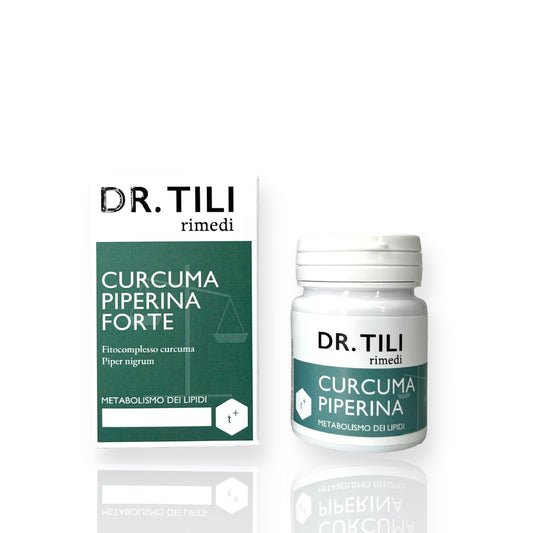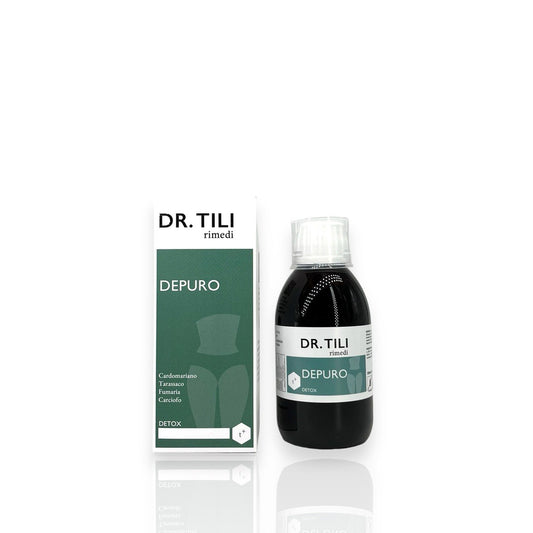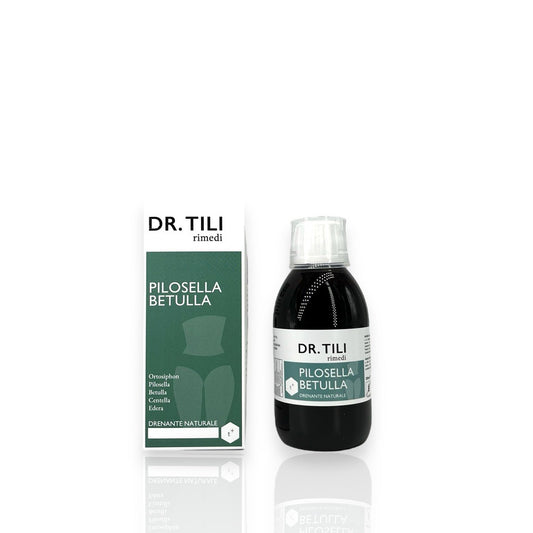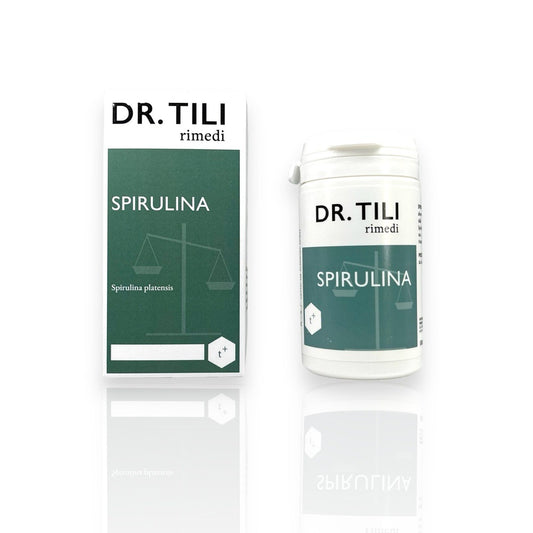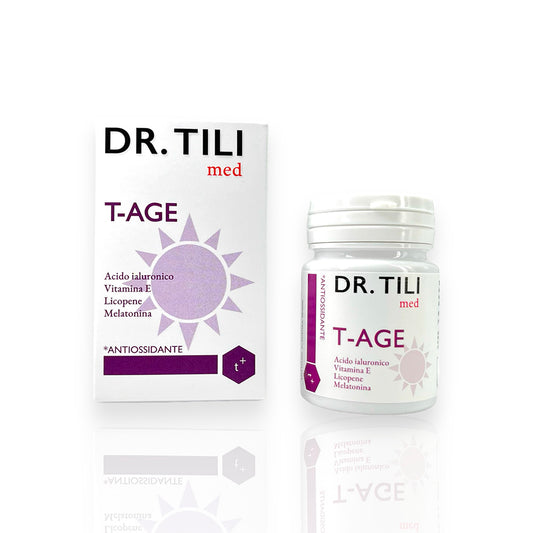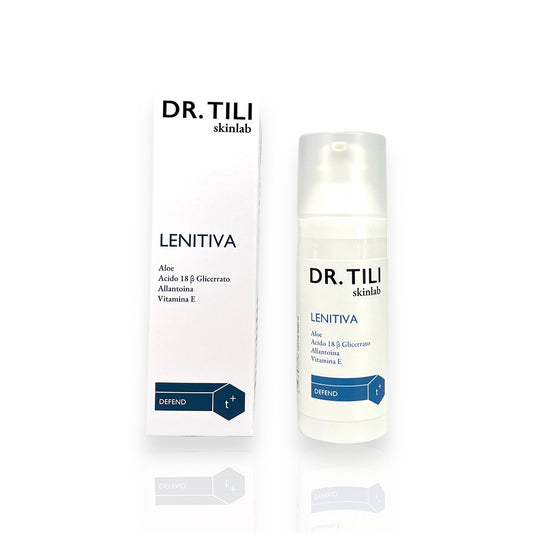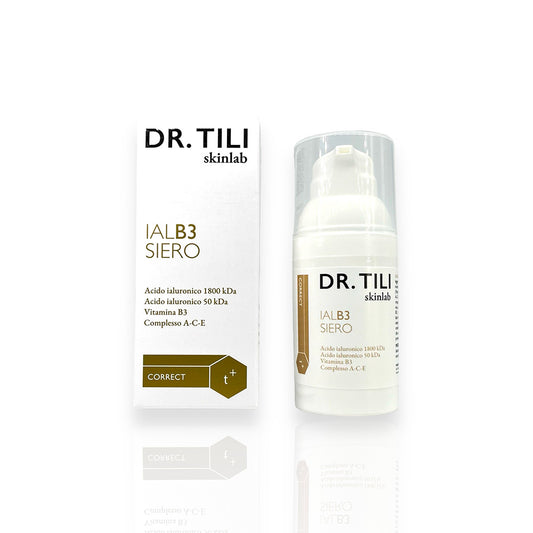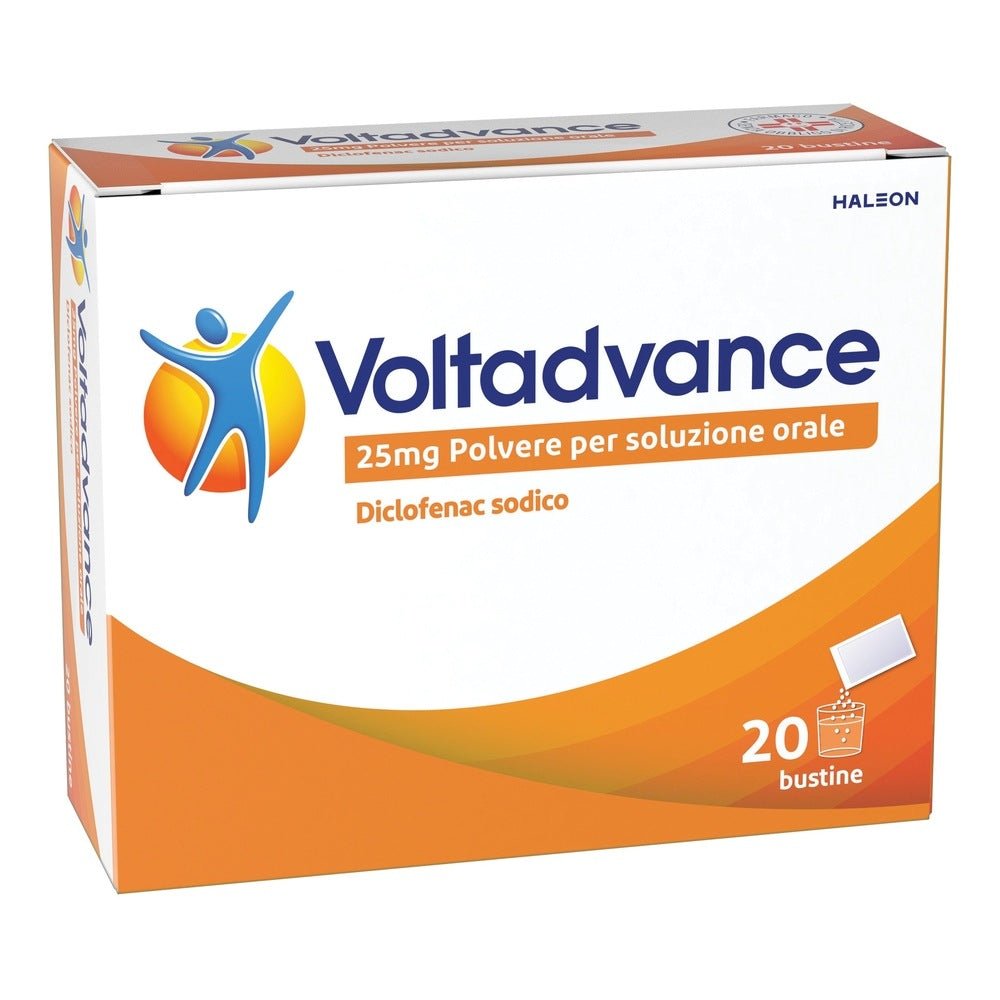HALEON ITALY Srl
Voltadvance 25mg 20 sachets powder for oral solution
Voltadvance 25mg 20 sachets powder for oral solution
Regular price
€12,80
Regular price
€12,80
Sale price
€12,80
Unit price
per
Tax included.
Shipping calculated at checkout.

Pickup available at Farmacia Tili
Usually ready in 24 hours
PRODUCT NET WEIGHT
PRODUCT NET WEIGHT
EAN
EAN
035500040
MINSAN
MINSAN
035500040
Voltadvance 25mg 20 sachets powder for oral solution is a medicine based on diclofenac sodium , an active ingredient known for its anti-inflammatory and analgesic properties. This medicine is indicated for the treatment of various types of pain, such as joint pain, lumbago, muscle pain, headache, toothache and menstrual pain. Each sachet contains 25 mg of diclofenac sodium, formulated to be easily soluble in water, ensuring practical and fast intake. The formulation in powder for oral solution is enriched with aromas containing limonene , linalool and eugenol , which help improve the intake experience. Voltadvance is designed to offer rapid and effective relief from painful symptoms, thanks to its targeted action and ease of use.
* Frequency reflects data from long-term treatment with a high dose (150 mg daily). Clinical trial and epidemiological data consistently point towards an increased risk of arterial thrombotic events (for example myocardial infarction or stroke) associated with the use of diclofenac, particularly at high dose (150 mg/day) and in long-term treatment (for contraindications and special warnings and precautions for use see sections 4.3 and 4.4). Reporting of suspected adverse reactions Reporting suspected adverse reactions that occur after authorisation of the medicinal product is important. It allows continued monitoring of the benefit/risk balance of the medicinal product. Healthcare professionals are asked to report any suspected adverse reactions via the national reporting system: www.aifa.gov.it/content/segnalazioni-reazioni-avverse.
ACTIVE INGREDIENTS
Active ingredients contained in Voltadvance 25mg 20 sachets powder for oral solution - What is the active ingredient in Voltadvance 25mg 20 sachets powder for oral solution?
One film-coated tablet contains : active ingredient diclofenac sodium 25 mg. One sachet of powder for oral solution contains : active ingredient diclofenac sodium 25 mg. Excipients with known effect : flavourings containing limonene, linalool, eugenol. For the full list of excipients, see section 6.1.EXCIPIENTS
Composition of Voltadvance 25mg 20 sachets powder for oral solution - What does Voltadvance 25mg 20 sachets powder for oral solution contain?
Film-coated tablets : potassium bicarbonate; mannitol; sodium lauryl sulphate; crospovidone; magnesium stearate; glycerol dibehenate; Clear Opadry (hypromellose; macrogol). Powder for oral solution : potassium bicarbonate; mannitol; acesulfame potassium; glycerol dibehenate; mint flavour (containing limonene, linalool, eugenol); anise flavour (containing limonene and linalool).DIRECTIONS
Therapeutic indications Voltadvance 25mg 20 sachets powder for oral solution - Why is Voltadvance 25mg 20 sachets powder for oral solution used? What is it used for?
Pain of various kinds such as, for example, joint pain, lumbago, muscle pain, headaches and toothaches, menstrual pain.CONTRAINDICATIONS SIDE EFFECTS
Contraindications Voltadvance 25mg 20 sachets powder for oral solution - When should Voltadvance 25mg 20 sachets powder for oral solution not be used?
• Hypersensitivity to the active substance or to any of the excipients listed in section 6.1. • Active gastrointestinal ulcer, bleeding or perforation. • History of gastrointestinal bleeding or perforation related to previous NSAID treatment or history of recurrent peptic ulcer/haemorrhage (two or more distinct episodes of proven ulceration or bleeding). • Last trimester of pregnancy and during breast-feeding (see section 4.6). • Severe hepatic insufficiency or severe renal insufficiency (see section 4.4). • Like other non-steroidal anti-inflammatory drugs (NSAIDs), diclofenac is also contraindicated in patients in whom asthmatic attacks, urticaria, angioedema or acute rhinitis, anaphylactic or anaphylactoid reactions have occurred after taking acetylsalicylic acid or other NSAIDs (see section 4.4). • The product must not be used in case of alterations of haematopoiesis. • In case of intensive diuretic therapy. • The product should not be taken if the stool is dark or bloody. • Established congestive heart failure (NYHA class II-IV), ischemic heart disease, peripheral arterial disease and/or cerebrovascular disease. Voltadvance should not be administered to children under 14 years of age.DOSAGE
Quantity and method of taking Voltadvance 25mg 20 sachets powder for oral solution - How to take Voltadvance 25mg 20 sachets powder for oral solution?
Adults and adolescents over 14 years : 1-3 coated tablets or sachets of powder for oral solution per day, with meals, even 2 in a single administration. The maximum daily dose is 75 mg. Do not exceed the recommended doses; in particular, elderly patients must adhere to the minimum dosages indicated above. The coated tablets should be swallowed whole, with water or other liquid; the powder sachets should be dissolved in a glass of water before taking. It is recommended to take the product preferably on a full stomach. Do not exceed 3 days of treatment. Undesirable effects can be minimized by administering the lowest effective dose for the minimum duration necessary to control symptoms (see section 4.4). Special populations Renal impairment Voltadvance is contraindicated in patients with severe renal impairment (see section 4.3). Caution is recommended when administering Voltadvance to patients with mild to moderate renal impairment (see section 4.4). Hepatic impairment Voltadvance is contraindicated in patients with severe hepatic impairment (see section 4.3). Caution is advised when administering Voltadvance to patients with mild to moderate hepatic impairment (see section 4.4).CONSERVATION
Storage Voltadvance 25mg 20 sachets powder for oral solution - How should Voltadvance 25mg 20 sachets powder for oral solution be stored?
This medicinal product does not require any special storage conditions.WARNINGS
Warnings Voltadvance 25mg 20 sachets powder for oral solution - About Voltadvance 25mg 20 sachets powder for oral solution it is important to know that:
After 2-3 days of treatment without appreciable results, consult your doctor. General Undesirable effects may be minimised by using the lowest effective dose for the shortest duration necessary to control symptoms (see section 4.2 and the sections below on gastrointestinal and cardiovascular risks). The use of diclofenac in conjunction with other systemic NSAIDs, including cyclooxygenase-2 selective inhibitors, should be avoided due to the lack of any evidence demonstrating synergistic benefits and the potential for additive undesirable effects. On the basis of basic medical considerations, caution is advised in the elderly. In particular, in frail elderly patients or those with a low body weight, the lowest effective dose should be used. As with other NSAIDs, allergic reactions, including anaphylactic/anaphylactoid reactions, may also occur in rare cases without previous exposure to diclofenac. Hypersensitivity reactions may also develop into Kounis syndrome, a serious allergic reaction that can lead to myocardial infarction. Presenting symptoms may include chest pain that occurs in association with an allergic reaction to diclofenac. Like other NSAIDs, diclofenac may mask the signs and symptoms of infection due to its pharmacodynamic properties. Prolonged use of any type of painkiller for headaches may worsen headaches. If this situation has occurred or is suspected, medical advice should be sought and treatment should be discontinued. The diagnosis of medication-overuse headache (MOH) should be suspected in patients who have frequent or daily headaches despite regular use of headache medications. Gastrointestinal effects Gastrointestinal bleeding, ulceration or perforation, which can be fatal, has been reported with all NSAIDs, including diclofenac, and may occur at any time during treatment, with or without warning symptoms or a previous history of serious gastrointestinal events. They generally have more serious consequences in the elderly. If gastrointestinal bleeding or ulceration occurs in patients receiving diclofenac, the medicinal product should be withdrawn. As with all NSAIDs, including diclofenac, close medical supervision is imperative and particular caution should be exercised when prescribing diclofenac to patients with symptoms indicative of gastrointestinal (GI) disorders, or with a history suggestive of gastric or intestinal ulceration, bleeding or perforation, chronic inflammatory bowel disease (see section 4.8). The risk of GI bleeding is higher with increasing NSAID doses and in patients with a history of ulcer, particularly if complicated with haemorrhage or perforation. The elderly have an increased frequency of adverse reactions, especially gastrointestinal bleeding and perforation which may be fatal. To reduce the risk of GI toxicity in patients with a history of ulcer, particularly if complicated with haemorrhage or perforation, and in the elderly, treatment should be initiated and maintained at the lowest effective dose. Concomitant use of protective agents (proton pump inhibitors or misoprostol) should be considered for these patients and also for patients requiring concomitant use of medicinal products containing low dose acetylsalicylic acid (ASA) or other medicinal products likely to increase gastrointestinal risk. Patients with a history of GI toxicity, particularly when elderly, should report any unusual abdominal symptoms (especially GI bleeding). Caution is advised in patients receiving concomitant medicinal products which could increase the risk of ulceration or bleeding, such as systemic corticosteroids, anticoagulants, anti-platelet agents or selective serotonin reuptake inhibitors (see section 4.5). Close medical surveillance and caution should also be exercised in patients with ulcerative colitis or Crohn's disease as these conditions may be exacerbated (see section 4.8). NSAIDs, including diclofenac, may be associated with an increased risk of gastrointestinal anastomotic leakage. Caution and close medical supervision are recommended when using diclofenac following gastrointestinal surgery. Hepatobiliary effects Close medical supervision is necessary when prescribing diclofenac to patients with hepatic insufficiency as their condition may be exacerbated. As with other NSAIDs, including diclofenac, values of one or more liver enzymes may increase. During prolonged treatment with diclofenac, regular monitoring of liver function is indicated as a precautionary measure. If abnormal liver function tests persist or worsen, if clinical signs or symptoms consistent with liver disease develop, or if other manifestations (e.g. eosinophilia, rash) occur, treatment with diclofenac should be discontinued. Hepatitis with diclofenac use may occur without prodromal symptoms. Particular caution should be exercised when using diclofenac in patients with hepatic porphyria as it may precipitate an attack. Renal effects Since fluid retention and oedema have been reported in association with NSAID therapy, including diclofenac, particular caution is called for in patients with renal insufficiency, history of hypertension, the elderly, patients receiving concomitant treatment with diuretics or medicinal products that can significantly impact renal function, and those patients with substantial extracellular volume depletion from any cause (e.g. before or after major surgery) (see section 4.3). As a precaution, monitoring of renal function is recommended when diclofenac is administered in such cases. Discontinuation of therapy is usually followed by recovery to pre-treatment conditions. Skin effects Serious skin reactions, some of them fatal, including exfoliative dermatitis, Stevens-Johnson syndrome, and toxic epidermal necrolysis, have been reported very rarely in association with the use of NSAIDs (see section 4.8). Patients appear to be at highest risk for these reactions early in the course of therapy, with the onset of the reaction occurring in the majority of cases within the first month of treatment. Voltadvance should be discontinued at the first appearance of skin rash, mucosal lesions, or any other sign of hypersensitivity. Cardiovascular and cerebrovascular effects Clinical trial and epidemiological data consistently point to an increased risk of arterial thrombotic events (for example, myocardial infarction or stroke) associated with the use of diclofenac, particularly at high doses (150 mg/day) and with long term treatment. Patients with significant risk factors for cardiovascular events (e.g. hypertension, hyperlipidaemia, diabetes mellitus, smoking) should be treated with diclofenac only after careful consideration. Patients with congestive heart failure (NYHA class I) should be treated with diclofenac only after careful consideration. Since the cardiovascular risks of diclofenac may increase with dose and duration of exposure, the shortest duration possible and the lowest effective daily dose should be used. Patients should be advised to seek medical advice if symptoms persist or do not improve within the recommended treatment duration. Patients should be alert to signs and symptoms of serious thrombotic events (e.g. chest pain, shortness of breath, weakness, slurred speech), which may occur without warning symptoms. Patients should be advised to contact a physician immediately if any of these events occur. Haematological effects During prolonged treatment with diclofenac, as with other NSAIDs, blood counts are recommended. Like other NSAIDs, diclofenac may temporarily inhibit platelet aggregation. Patients with haemostatic defects should be carefully monitored. Respiratory effects (pre-existing asthma) In patients with asthma, seasonal allergic rhinitis, swelling of the nasal mucosa (e.g. nasal polyps), chronic obstructive pulmonary disease or chronic respiratory tract infections (especially if associated with allergic rhinitis-like symptoms), reactions to NSAIDs such as asthma exacerbations (so-called analgesic intolerance/analgesic asthma), Quincke's oedema or urticaria are more frequent than in other patients. Special precaution is therefore recommended in such patients (prepare for emergency). This also applies to patients who are allergic to other substances, e.g. with skin reactions, itching or urticaria. Important information about some of the excipients: Voltadvance 25 mg film-coated tablets contain less than 1 mmol sodium (23 mg) per dose, i.e. essentially 'sodium-free'. Voltadvance 25 mg powder for oral solution contains less than 1 mmol sodium (23 mg) per dose, that is to say essentially 'sodium-free'. Voltadvance 25 mg powder for oral solution contains the flavour aniseed which contains limonene and linalool. Limonene and linalool may cause allergic reactions. Voltadvance 25 mg powder for oral solution contains the flavour mint which contains limonene, linalool and eugenol. Limonene, linalool and eugenol may cause allergic reactions.INTERACTIONS
Interactions Voltadvance 25mg 20 sachets powder for oral solution - Which medicines or foods can modify the effect of Voltadvance 25mg 20 sachets powder for oral solution?
Before using the product, if you are taking other drugs, it is advisable to inform your doctor as it may be necessary to change the dosage or interrupt the treatment. The following interactions include those observed with diclofenac gastro-resistant tablets and/or other pharmaceutical forms of diclofenac. Lithium : if administered concomitantly, diclofenac may elevate plasma concentrations of lithium. Monitoring of serum lithium levels is recommended. Digoxin : if administered concomitantly, diclofenac may elevate plasma concentrations of digoxin. Monitoring of serum digoxin levels is recommended. Diuretics and antihypertensive agents : patients undergoing treatment with such drugs should consult their doctor before taking the product. Like other NSAIDs, concomitant use of diclofenac with diuretics or antihypertensive agents (e.g. beta-blockers, angiotensin converting enzyme (ACE)) may cause a decrease in their antihypertensive effect. Therefore, the combination should be administered with caution and patients, especially elderly patients, should receive periodic monitoring of their blood pressure. Patients should be adequately hydrated and consideration should be given to monitoring of renal function after initiation of concomitant therapy and periodically thereafter, particularly for diuretics and ACE inhibitors due to an increased risk of nephrotoxicity. Other NSAIDs and corticosteroids : Concomitant use of diclofenac and other systemic nonsteroidal anti-inflammatory drugs or corticosteroids may increase the incidence of gastrointestinal side effects and should be avoided (see section 4.4). Anticoagulants and antiplatelet agents : Caution is recommended, as concomitant administration may increase the risk of bleeding. Although clinical investigations do not seem to indicate an influence of diclofenac on the action of anticoagulants, there are reports of an increased risk of haemorrhage in patients receiving diclofenac and anticoagulants concomitantly. Careful monitoring of such patients is therefore recommended. Selective serotonin reuptake inhibitors (SSRIs) : Concomitant administration of systemic NSAIDs, including diclofenac, and SSRIs may increase the risk of gastrointestinal bleeding (see section 4.4). Antidiabetics : Clinical studies have shown that diclofenac can be administered together with oral antidiabetics without influencing their clinical effect. However, isolated cases of both hypoglycaemic and hyperglycaemic effects have been reported, requiring dosage adjustment of antidiabetic agents during treatment with diclofenac. For this reason, in case of concomitant therapy, monitoring of blood glucose levels is recommended as a precautionary measure. Some cases of metabolic acidosis have also been reported when diclofenac was co-administered with metformin, especially in patients with pre-existing renal insufficiency. Methotrexate : Diclofenac may inhibit the renal tubular release of methotrexate, increasing its levels. Caution is advised when administering NSAIDs, including diclofenac, within 24 hours of or after treatment with methotrexate since blood concentrations of methotrexate and consequently the toxicity of this substance may increase. Ciclosporin : due to its effect on renal prostaglandins, diclofenac, like other NSAIDs, may increase the nephrotoxicity of ciclosporin. Therefore, diclofenac should be administered at lower doses than those used in patients not receiving ciclosporin. Drugs known to cause hyperkalaemia : concomitant treatment with potassium-sparing diuretics, ciclosporin, tacrolimus or trimethoprim may be associated with an increase in serum potassium levels, which should therefore be monitored frequently (see section 4.4). Quinolone antibacterials : isolated cases of convulsions have been reported, probably due to the concomitant use of quinolones and NSAIDs. Phenytoin : When phenytoin is used concomitantly with diclofenac, monitoring of phenytoin plasma concentrations is recommended due to an expected increase in phenytoin exposure. Colestipol and cholestyramine : These agents may induce a delay or decrease in diclofenac absorption. Therefore, it is recommended to administer diclofenac at least 1 hour before or 4-6 hours after colestipol/cholestyramine administration. CYP2C9 inhibitors : Caution is advised when prescribing diclofenac concomitantly with CYP2C9 inhibitors (such as sulfinpyrazone and voriconazole); this may lead to a significant increase in peak plasma concentrations and exposure to diclofenac, due to inhibition of diclofenac metabolism. Diclofenac may also decrease the efficacy of intrauterine devices and a risk of inhibition of interferon alpha has been reported.SIDE EFFECTS
Like all medicines, Voltadvance 25mg 20 sachets powder for oral solution can cause side effects - What are the side effects of Voltadvance 25mg 20 sachets powder for oral solution?
Undesirable effects (Table 1) are listed below by system organ class and MedDRA frequency. Frequencies are defined as: very common (≥ 1/10); common (≥ 1/100 to <1/10); uncommon (≥ 1/1,000 to < 1/100); rare (≥ 1/10,000 to < 1/1,000); very rare (< 1/10,000); not known (cannot be estimated from the available data). The following undesirable effects include those reported with short-term or long-term use. If any of these effects occur during treatment with Voltadvance, it is recommended to stop the drug and consult your doctor. Table 1| Pathologies of the haemolymphopoietic system | |
| Very rare | thrombocytopenia, leukopenia, anemia (including haemolytic and aplastic anemia), agranulocytosis. |
| Immune system disorders | |
| Rare | hypersensitivity, anaphylactic and anaphylactoid reactions (including hypotension and shock). |
| Very rare | angioedema (including facial edema). |
| Psychiatric disorders | |
| Very rare | disorientation, depression, insomnia, nightmares, irritability, psychotic reactions. |
| Nervous system disorders | |
| Common | headache, dizziness. |
| Rare | drowsiness. |
| Very rare | paraesthesia, memory impairment, convulsions, anxiety, tremors, aseptic meningitis, taste disturbances, cerebrovascular accidents. |
| Eye pathologies | |
| Very rare | vision disturbances, blurred vision, diplopia. |
| Ear and labyrinth pathologies | |
| Common | dizziness. |
| Very rare | tinnitus, worsening of hearing. |
| Heart disease | |
| Uncommon* | Myocardial infarction, heart failure, palpitations, chest pain. |
| Not known | Kounis Syndrome |
| Vascular pathologies | |
| Very rare | hypertension, vasculitis. |
| Respiratory, thoracic and mediastinal pathologies | |
| Rare | asthma (including dyspnea). |
| Very rare | pneumonia. |
| Gastrointestinal disorders | |
| Common | nausea, vomiting, diarrhea, dyspepsia, abdominal pain, flatulence, anorexia. |
| Rare | gastritis, gastrointestinal haemorrhage, haematemesis, haemorrhagic diarrhoea, melaena, gastrointestinal ulcer (with or without bleeding or perforation, which may lead to peritonitis), dry mouth and mucous membranes, gastrointestinal stenosis. |
| Very rare | colitis (including haemorrhagic colitis and exacerbation of ulcerative colitis or Crohn's disease), constipation, stomatitis (including ulcerative stomatitis), glossitis, esophageal disorders, intestinal diaphragm disease, pancreatitis, constipation. |
| Not known | Ischemic colitis |
| Hepatobiliary pathologies | |
| Common | increased transaminases. |
| Rare | hepatitis, jaundice, liver disorders. |
| Very rare | fulminant hepatitis, hepatic necrosis, hepatic failure. |
| Skin and subcutaneous tissue disorders | |
| Common | rash. |
| Rare | urticaria. |
| Very rare | bullous eruptions, eczema, erythema, erythema multiforme, Stevens-Johnson syndrome, toxic epidermal necrolysis (Lyell's syndrome), exfoliative dermatitis, hair loss, photosensitivity reaction, purpura, Henoch-Schonlein purpura, pruritus. |
| Kidney and urinary disorders | |
| Very rare | acute renal failure, hematuria, proteinuria, nephrotic syndrome, interstitial nephritis, renal papillary necrosis. |
| Systemic disorders and conditions related to the administration site | |
| Rare | edema. |
OVERDOSE
Overdose Voltadvance 25mg 20 sachets powder for oral solution - What are the risks of Voltadvance 25mg 20 sachets powder for oral solution in case of overdose?
Symptoms There is no typical clinical picture resulting from an overdose of diclofenac. Overdose may cause symptoms such as vomiting, gastrointestinal bleeding, diarrhoea, dizziness, tinnitus or convulsions. In the case of significant poisoning, acute renal failure and liver damage are possible. Therapeutic measures Treatment of acute poisoning with NSAIDs, including diclofenac, consists essentially of supportive measures and symptomatic treatment. In case of complications such as hypotension, renal failure, convulsions, gastrointestinal disturbances and respiratory depression, supportive measures and symptomatic treatment should be adopted. Specific therapies, such as forced diuresis, dialysis or haemoperfusion, are unlikely to be helpful in eliminating NSAIDs, including diclofenac, due to their high plasma protein binding and extensive metabolism. Further treatment modalities should take into account the clinical indications or the recommendation of the poison control centre, where available.PREGNANCY AND BREASTFEEDING
If you are pregnant or breast-feeding, think you may be pregnant or are planning to have a baby, ask your doctor for advice before taking Voltadvance 25mg 20 sachets powder for oral solution.
Pregnancy Inhibition of prostaglandin synthesis may adversely affect the pregnancy and/or the embryo/fetal development. Results of epidemiological studies suggest an increased risk of miscarriage and of cardiac malformation and gastroschisis after use of a prostaglandin synthesis inhibitor in early pregnancy. The absolute risk of cardiac malformations increased from less than 1%, up to approximately 1.5%. The risk was believed to increase with dose and duration of therapy. In animals, administration of prostaglandin synthesis inhibitors has been shown to result in increased pre- and post-implantation loss and embryo-fetal mortality. In addition, an increased incidence of various malformations, including cardiovascular, has been reported in animals given prostaglandin synthesis inhibitors during the organogenetic period. From the 20th week of pregnancy onwards, the use of diclofenac may cause oligohydramnios resulting from fetal renal dysfunction. This condition may be encountered soon after initiation of treatment and is usually reversible upon discontinuation of treatment. In addition, cases of constriction of the ductus arteriosus have been reported following treatment in the second trimester of pregnancy, most of which disappeared after discontinuation of treatment. Therefore, during the first and second trimester of pregnancy, diclofenac should not be given unless clearly necessary. If diclofenac is used by a woman attempting to conceive, or during the first and second trimester of pregnancy, the dose should be kept as low and duration of treatment as short as possible. Following exposure to diclofenac for several days from the 20th week of gestation onwards, antenatal monitoring for oligohydramnios and constriction of the ductus arteriosus should be considered. In case of oligohydramnios or constriction of the ductus arteriosus, treatment with diclofenac should be discontinued. During the third trimester of pregnancy, all prostaglandin synthesis inhibitors may expose - the fetus to: - cardiopulmonary toxicity (premature constriction/closure of the ductus arteriosus and pulmonary hypertension); - renal dysfunction (see above), which may progress to renal failure with oligo-hydroamnios; - the mother and the neonate, at the end of pregnancy, to: - possible prolongation of bleeding time, and anti-aggregating effect which may occur even at very low doses; - inhibition of uterine contractions resulting in delayed or prolonged labor. Consequently, diclofenac is contraindicated during the third trimester of pregnancy (see sections 4.3 and 5.3). Breast-feeding Like other NSAIDs, diclofenac passes into breast milk in small amounts. Therefore, diclofenac should not be administered during breast-feeding to avoid undesirable effects in the infant. Fertility As with other NSAIDs, the use of diclofenac may impair female fertility and is not recommended in women attempting to conceive. Discontinuation of diclofenac should be considered in women who have difficulties conceiving or who are undergoing investigation of infertility.DRIVING AND USE OF MACHINERY
Taking Voltadvance 25mg 20 sachets powder for oral solution before driving or using machines - Does Voltadvance 25mg 20 sachets powder for oral solution affect driving or using machines?
Patients who experience visual disturbances, dizziness, vertigo, somnolence or other central nervous system disturbances with the use of diclofenac should refrain from driving vehicles or operating machinery.



